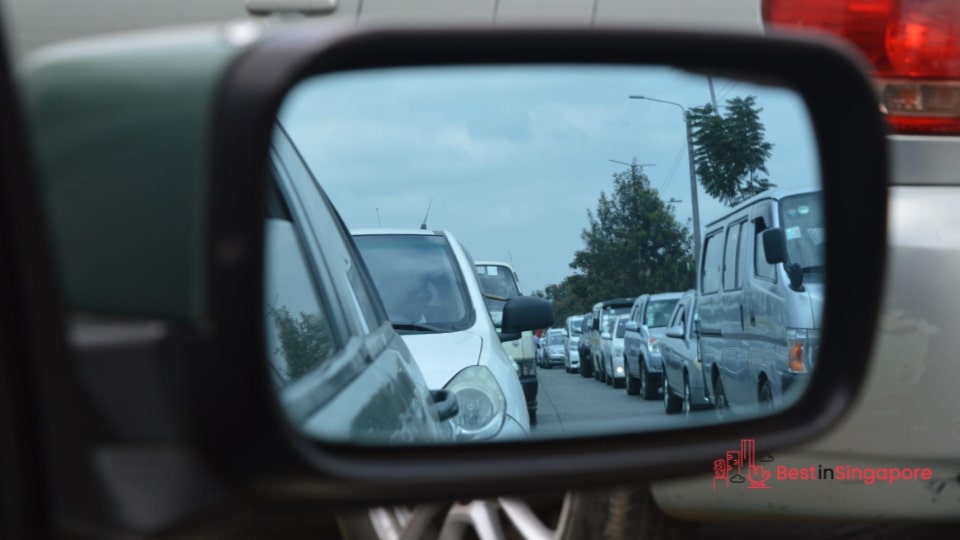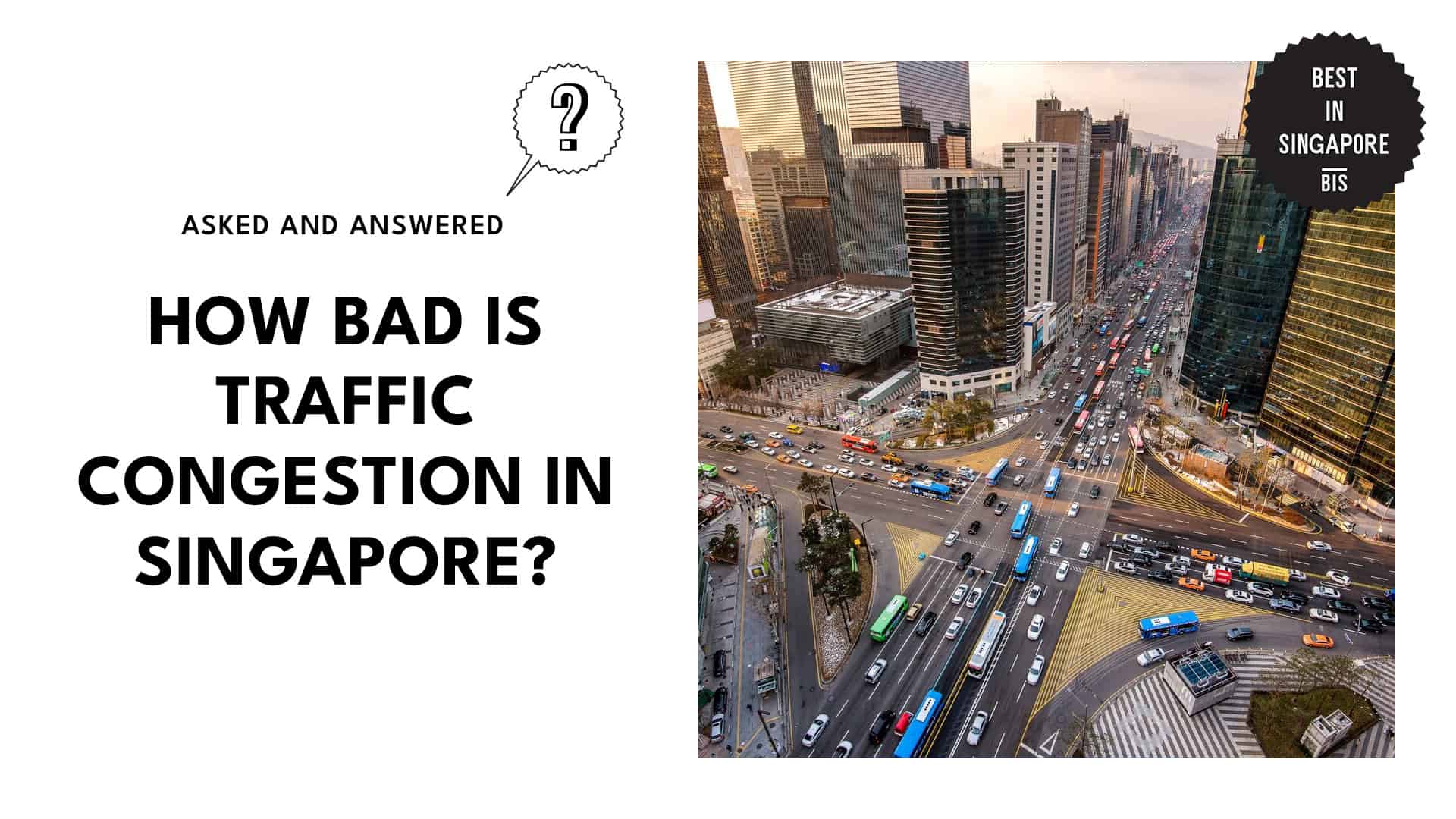How Bad is Traffic Congestion in Singapore?
Singapore’s traffic is better managed and less congested than many other Southeast Asian countries, thanks to its efficient public transportation system and proactive traffic management policies.
However, at the tail end of January 2016, the country experienced a serious oil spill on the Bukit Timah Expressway, which caused a massive traffic jam and affected nearly a dozen bus services at SMRT’s Woodlands bus interchange.
While the country isn’t entirely traffic-free, its measures keep congestion at manageable levels. But how bad is traffic congestion in Singapore today, what are its main causes, and how can it be resolved?
What is the congestion level in Singapore?
— From nikophotogram
In 2021, the congestion level in Singapore reached 29 per cent. This means travel time between two points increased by 29% compared to a free-flow situation.
Singapore has improved its ranking in the global index of most congested cities, moving from 45th to 55th place. However, traffic congestion remains an issue, especially on certain roads with slow-moving and heavy traffic.
In mid-2022, traffic volume on expressways in Singapore reached approximately 95 per cent of pre-Covid-19 levels in May. This increase came after most Covid-19 restrictions were eased in the last week of April 2022.
The figures from the Land Transport Authority indicated a rise from 90 per cent in January 2022. This is despite many companies opting for flexible-hour work arrangements.
Singapore Traffic Peak Hours
— From aud_dream.jpg
Singapore’s peak traffic hours typically occur during the morning and evening rush hours on weekdays. But it’s important to note that traffic patterns can change over time due to factors such as transportation policies, urban development, and population shifts.
1. Peak Hour Traffic During Weekdays
The current morning peak hours are usually from around 7.30 AM to 9 AM.
During these times, roads leading to the Central Business District (CBD) and major commercial areas as well as expressways and major intersections can experience heavier traffic congestion as people commute to and from work and school.
Meanwhile, evening peak hours are typically from around 5.30 PM to 7 PM.
2. Peak Hour Traffic During the Weekend
Certain areas, such as Orchard Road and popular shopping districts, may also see increased traffic during weekends and holiday periods.
On Saturdays and Sundays, peak traffic hours are usually more spread out and not as concentrated as during the typical weekday rush hours.
However, specific peak hours on weekends can vary depending on factors like events, shopping hours, and recreational activities.
In general, traffic could increase from late morning to early afternoon as people go out for shopping, leisure activities, and brunch.
Traffic can also pick up in the late afternoon to early evening as people head out for dinner, entertainment, or social gatherings.
Why does traffic congestion occur in Singapore?

In this section, we’ll explore the reasons behind traffic congestion in Singapore. Despite its efficient transportation system, the city-state faces challenges that contribute to congestion on its roads.
Limited Road Space
Singapore is a small island city-state with a limited land area. The available road space may not always be sufficient to accommodate the growing number of vehicles on the roads.
With limited land area, there is a finite amount of space available for road construction and expansion. Despite the government’s efforts to build efficient road networks, there are inherent limitations on how much road space can be created.
High Vehicle Ownership
Singapore has a relatively high rate of vehicle ownership. Despite the strict vehicle quota system, the increasing number of cars and other private vehicles on the roads contributes to congestion.
Furthermore, the popularity of private-hire services like ride-hailing platforms and the emergence of car-sharing services have also contributed to an increase in the number of vehicles on the roads.
These services provide additional transportation options, but they can also add to the overall vehicle volume during peak times.
Centralised Business District
The Central Business District (CBD) is a major commercial and financial hub in Singapore. During peak hours, there is a significant influx of commuters travelling to and from the CBD, leading to traffic congestion in this area.
The concentration of businesses and job opportunities in the CBD creates a demand for transportation services during these peak hours.
Public Transportation Capacity
Though Singapore’s public transportation system is efficient, there may still be capacity limitations during peak hours, leading some individuals to opt for private vehicles instead.
During peak hours, when a significant number of people are travelling to and from work or school, the public transportation system may experience capacity limitations.
Trains and buses can become crowded, and passengers may find it challenging to secure seats or find enough space to comfortably stand.
Rush Hours
Rush hours, typically during morning and evening commutes, see a surge in traffic as people travel to and from work, school, or other activities.
During the morning rush hour, which typically spans from around 7.30 AM to 9 AM, commuters head towards their workplaces or schools.
The evening rush hour occurs from around 5.30 PM to 7 PM when people begin to leave their workplaces and schools to head home.
Special Events/Festivals/Accidents
Traffic congestion can also occur due to special events, road closures, accidents, or construction activities.
Large-scale events, such as concerts, sporting events, festivals, and exhibitions, can attract a significant number of attendees, leading to an influx of vehicles in specific areas.
Additionally, traffic accidents, particularly those involving multiple vehicles or blocking major roads, can result in traffic congestion as emergency response teams and authorities attend to the situation.
What are the most congested roads in Singapore?
TPE Expressway
— From singapore_blog
The Tampines Expressway (TPE) is notorious for traffic jams, some lasting up to 45 minutes!
Accidents may also add to congestion. Connecting to the CTE and SLE, the TPE is heavily used in Singapore’s northeastern side.
Peak hours, especially when commuters head to work, see significant congestion on the TPE.
PIE Expressway
— From maxicabsingaporenet
The Pan Island Expressway (PIE) is notorious for peak-hour traffic jams, stretching from the west to the east of Singapore, connecting Tuas to Changi Airport.
Passing through densely populated areas, including Jurong, Bukit Timah, Toa Payoh, and Tampines, it faces congestion during peak hours.
Despite some relief from the Lornie Highway opening in April 2019, congestion remains, extending to connecting roads like Jalan Anak Bukit and Corporation Road. Jams can last from 45 minutes to two hours, impacting commuters significantly.
CTE Expressway
— From photobomber3007
Because it links Yio Chu Kang Road to Bukit Timah Road and the PIE, the CTE expressway is often congested during peak hours. Popular landmarks like ITE College Central and Ang Mo Kio Industrial Parks 1 and 2 contribute to its high usage.
With two underground tunnels granting access to Orchard Road, Clemenceau Avenue, and Cairnhill Circle, the CTE experiences slow-moving congestion similar to other expressways.
Peak hours inevitably lead to congestion, with travel times extending to one to two hours for most commuters.
Bukit Timah Road
— From wonder_bear_bear
Bukit Timah Road is notorious for being one of Singapore’s worst roads during morning and evening commutes, with recent years witnessing a significant increase in traffic.
As a major road connecting the city centre to Woodlands Road, it passes through densely populated areas like Little India, Newton Road, and Farrer Road.
Its high accessibility contributes to severe congestion, especially during peak hours. Efforts to reduce congestion, such as constructing a new U-turn at Newton Circus, may temporarily slow traffic flow during construction.
Braddell Road
— From meetnaseer
Braddell Road is frequently plagued by slow-moving traffic during peak hours. Situated in Bishan and connecting to the CTE, it grants access to popular locations like the BCA Academy and Beatty Secondary School.
This high accessibility attracts frequent use by motorists, worsening congestion during peak hours. Though the flyover has improved traffic flow, motorists may still take up to half an hour to exit the road, increasing accident risks.
Clementi Road
— From sbs7451l
Clementi Road is also notorious for experiencing severe congestion during peak hours.
Connecting the West Coast Highway to Bukit Timah Road, it serves many commuters living in Clementi and Queenstown as well as students travelling to NUS and Singapore Polytechnic.
As a result, travel time during peak hours can be double or even triple that of off-peak hours. The morning hours from 7 AM to 9 AM are particularly bad, with some commuters labelling the commute as one of the worst in Singapore.
Lornie Road
— From ahpek93
Lornie Road is well-known for its heavy congestion during peak hours.
Situated alongside the MacRitchie Viaduct, it provides access to popular locations like Thomson Plaza and MacRitchie Reservoir as well as connecting to PIE and Adam and Farrer Roads.
Despite the Lornie Highway’s construction to ease congestion, redirection of traffic from other roads like Kheam Hock Road limits its significant impact on easing overall congestion.
Upper Serangoon Road
— From ivan_teh_runningman
Prone to congestion, Upper Serangoon Road connects MacPherson Road to Buangkok Drive, leading to Serangoon Central, Hougang, Sengkang, and Punggol East.
Its accessibility to locations like DPS International School and Nex adds to its usage.
With a large number of Punggol residents frequently using the road, congestion during peak hours becomes a major issue. Journeys that normally take twenty minutes can extend to an hour or more due to traffic jams.
How does Singapore solve its traffic congestion?
— From a5h_white
Electronic Road Pricing System
— From jammerau
The implementation of an Electronic Road Pricing (ERP) system charges vehicles for using certain congested roads during peak hours.
This mechanism helps discourage unnecessary car usage and can alleviate traffic bottlenecks in specific areas.
Strict Vehicle Quota System
— From aandretan
Singapore has a strict vehicle quota system which limits the number of new vehicles that can be registered each year. This measure helps control the growth of vehicle numbers and can prevent excessive traffic congestion.
Comprehensive Urban Planning
— From singaporeurbanplanning
The city-state’s well-planned urban development and road infrastructure contribute to a smoother flow of traffic in most areas.
To address the challenges posed by population growth and its impact on transportation, the Singaporean government strives to create a well-connected and sustainable city that promotes alternative mobility options, such as cycling and walking.
Moreover, it aims to create mixed-use developments, where residential, commercial, and recreational areas are closely integrated. This approach reduces the need for long-distance commuting.
Adoption of Flexible Work Arrangements
— From gofindsingapore
Some companies in the CBD have adopted flexible work arrangements and staggered office hours to reduce peak-hour traffic congestion.
These measures aim to alleviate the strain on the transportation network during peak hours and create a more sustainable and efficient commuting experience for workers in the CBD.


